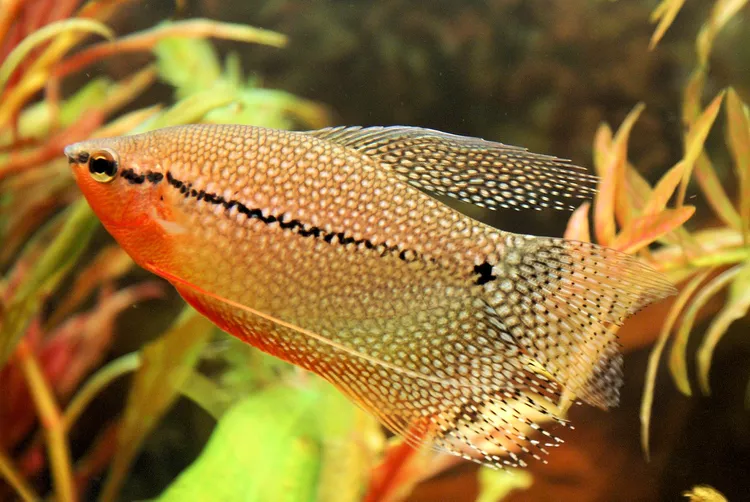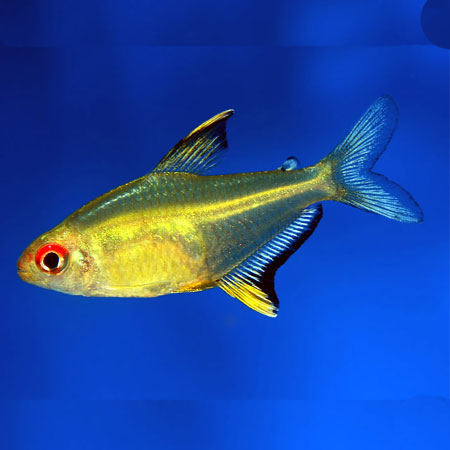Named for the males’ vibrant red color during spawning season, the Cherry Barb makes a great schooling addition to many freshwater community tanks. These slender fish are common in this pet hobby and are easy to manage for most beginner aquarists. These smaller fish tend to be shy around larger, aggressive fish, so keep them in a group and choose their tank mates carefully.
The Cherry Barb is native to Sri Lanka. They are found in the Kelani to Nilwala basins. Due to their popularity in the aquarium trade, more vibrantly colored individuals are heavily overfished.
Their characteristic red coloration is more common in male Cherry Barbs during spawning season. Most Cherry Barbs will be primarily tan to dark brown with highlights of red or orange. All Cherry Barbs have a darker line of scales along their midline, right along their lateral line.
Tankmates
Cherry Barbs like to be in small schools, so be sure to plan ahead so there is enough room for 5-6 fish. Suitable tankmates include other barb species, such as the Rosy Barb or Black Ruby Barb. Common tetra species, such as the Neon Tetra or Buenos Aires Tetra also add a splash of color to your tank. There are many peaceful community fishes that are well suited to a tank with the Cherry Barb. Make sure their water parameters match before you bring them home!
Cherry Barb Habitat and Care
Being a shyer fish, the Cherry Barb likes to have lots of places to hide in their home aquarium. They should be added to your aquarium first, so they can get settled and not have to compete for hiding places.
Since they like to stick in a group, you may need to make lots of hiding places to accommodate more than one fish at a time. Planted tanks or aquascapes make a great home for Cherry Barbs with good water quality and lots of places to hide.
Cherry Barbs are relatively easy to care for as long as you keep up with your regular maintenance. In planted tanks, be sure to remove dead plant material regularly and pay attention to any pH changes between day and night.
Cherry Barb Diet and Feeding
As an omnivore, the Cherry Barb will accept a wide variety of foods. A standard tropical pellet will suffice for most of their nutritional needs. You can supplement with fresh veggies and frozen treats on occasion. Most Cherry Barbs raised in captivity are very well accustomed to a pelleted diet and are not too picky about the type.




Reviews
There are no reviews yet.